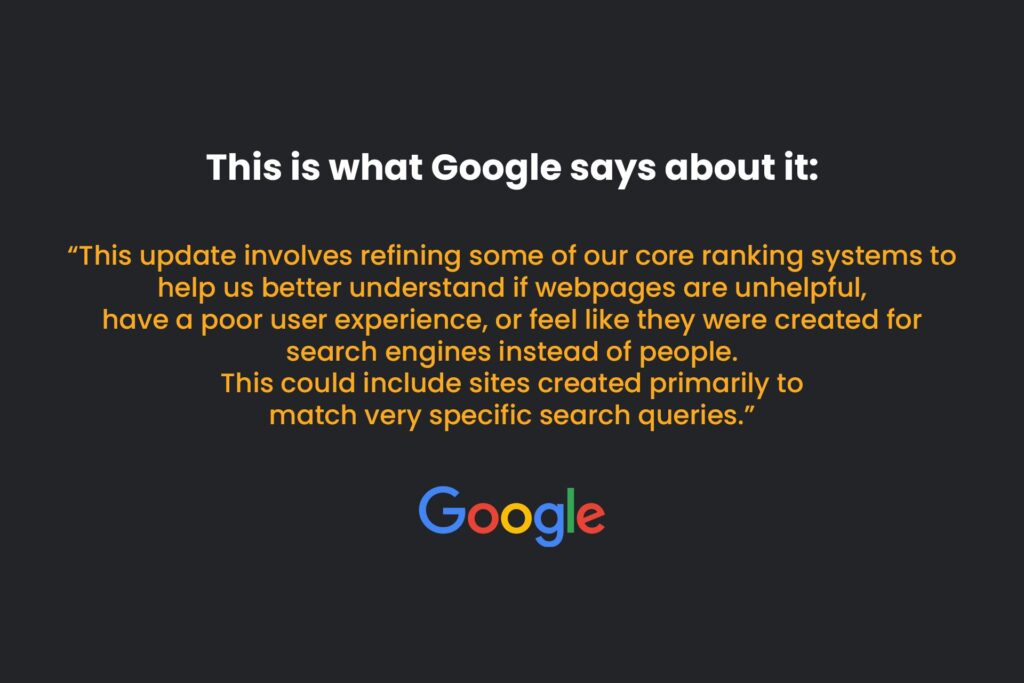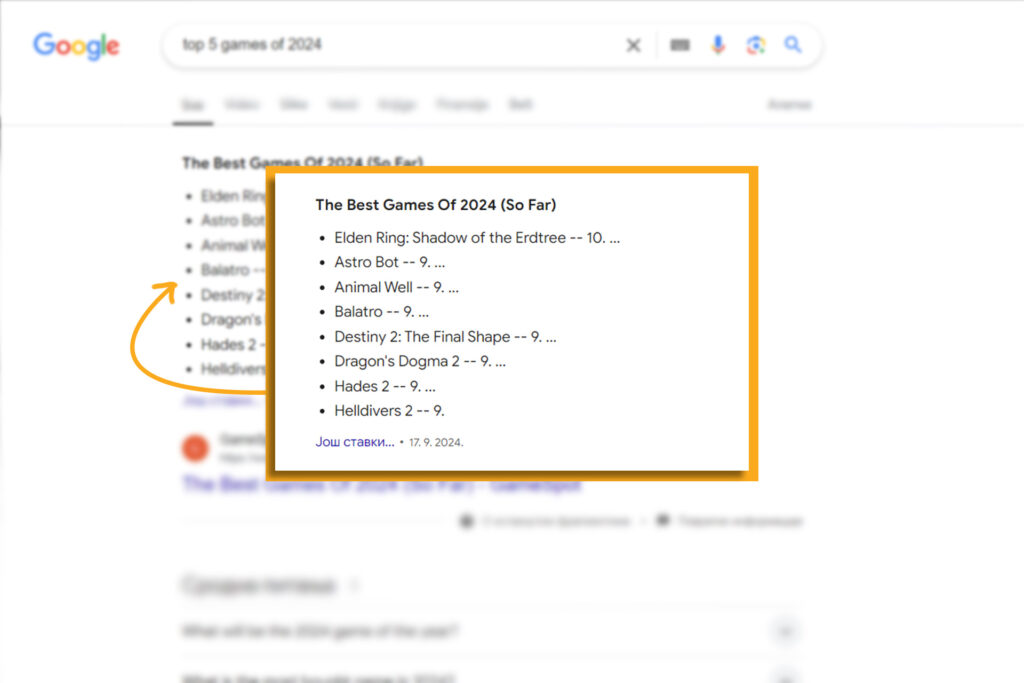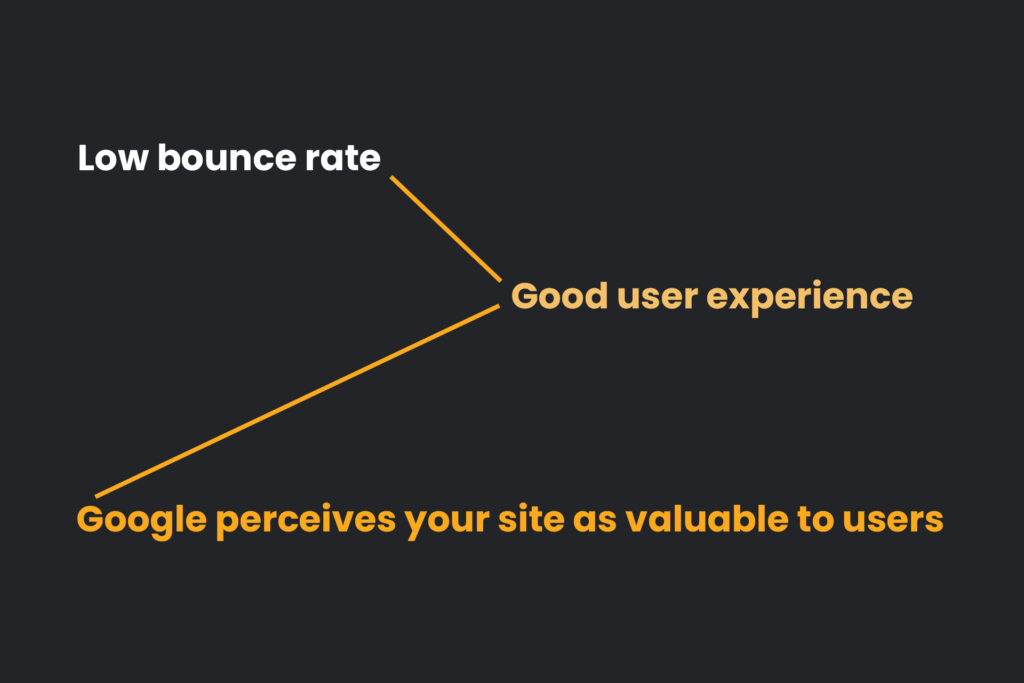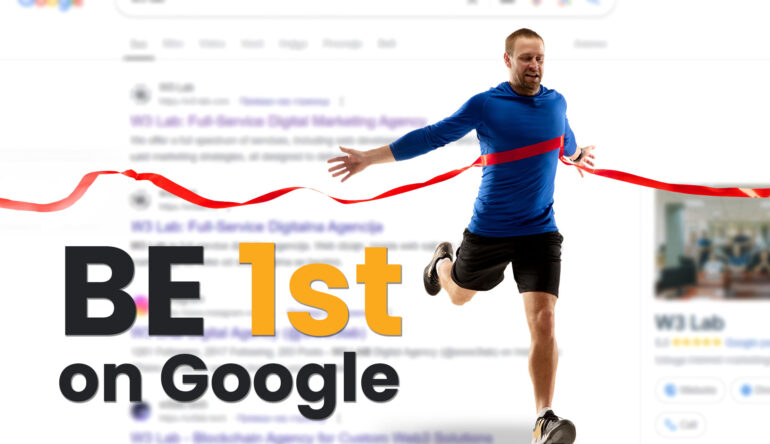Before we get into the topic, let’s first answer some important questions.
Why is getting on the first page of Google search results important?
The answer is simple: Few people even go to the second page. To get people to visit your website, it is important to be and stay on the first page.
How does Google rank organic search results?
Google ranks organic search results based on five main factors:
- Meaning: The intent behind the user’s search
- Relevance: How well the content satisfies the user’s intent
- Quality: The helpfulness of the content
- Usability: The functionality and accessibility of the page
- Context: The user’s search settings and history
To get on the first page of Google you should use a mix of the right keywords, optimize your content, and use SEO best practices.
Different media can get you on the first page of Google. This is due to the different factors that are taken into consideration by its algorithm.
The media include:
- Blog posts and website pages
- Google business profile
- Snippets
- Landing pages (this is a paid ads section, but it should be mentioned too)
We have created a mini guide to help you in achieving your goal and rank higher.
This is how:
1. Keyword Strategy
It’s all about keywords. Choosing the right ones is crucial to rise high in search.

In the past, the general advice was to use long-tail keywords—phrases that are more specific and less competitive that can help you target niche audiences with higher intent.
For example, targeting “affordable SEO services for small businesses” instead of simply “SEO services” captures a more relevant audience, increasing your chances of ranking higher for that particular search.
However, as with everything in SEO, this depends on various factors and is not always the way to go. Don’t get me wrong, this advice is still a good one, but it should be expanded on.
You should mix both short-tail and long-tail keywords in your strategy, as a page targeting long-tail keywords can sometimes rank higher for short-tail ones, especially if your site has high authority.
One more piece of advice is to try and rank higher for the keywords that you are on the second page of the search for. These keywords are good candidates for improvement in rankings since Google thinks that your page already has some value. The thing you should now do is beat your competitors.
2. Create High-Quality, All-Encompassing Content
Google rewards content that offers valuable information and answers users’ questions.
Well-structured, engaging, in-depth articles or guides tailored to your audience’s search intent can help you achieve better rankings.
Aim for content that is:
- Relevant: Address the questions your audience is asking.
- Organized: Use headers and subheadings to break up content, making it easier for users to read and understand.
- Updated: Keep older content fresh by updating it regularly to ensure continued relevance. This practice also helps maintain or improve your rankings over time.
Create high-quality content and publish it through web pages, case studies, and/or blog posts for organic traffic.
Providing user-centric, high-quality content should always be a priority, especially after the 2024 March Google Core Update that is targeting low-quality and spammy content.
This is what Google says about it in their post:

This is why when writing content, make sure to include your target keywords in key places like the title, headers, and throughout the body. However, ensure the keyword placement is natural and enhances the user experience rather than appearing forced.
3. Optimize for Google SERP Features
Let’s talk about Featured snippets. They are often called “Position 0,” and appear at the very top of search results. They provide a quick answer to questions users have.

Beyond simply appearing on the first page of Google, securing a featured snippet or other prominent SERP (Search Engine Results Page) feature can significantly increase your visibility.
Structuring your content clearly will help you be featured in these snippets.
This is why you should:
- Use headings and subheadings.
- Include bulleted or numbered lists.
- Answer common questions concisely.
Incorporating tables, lists, or short summaries can make your content more appealing to Google for featured snippets.
4. Focus on Technical SEO and Site Structure
A fast, mobile-friendly website with an optimized structure is very important for SEO success. Google now uses mobile-first indexing, meaning it predominantly uses the mobile version of your site for ranking and indexing.
This is why you should make sure that your site is responsive, fast, and secure. It should work seamlessly across mobile devices, pages should load within 4 seconds and you should use HTTPS for secure browsing.
It is important to note that HTTPS is a ranking factor for Google.
Tools like Google PageSpeed Insights and SEMrush can help you audit your site’s technical health, ensuring it meets these requirements.
5. High Quality Backlinks
Backlinks—links from other reputable sites to yours—are one of the most influential ranking factors. They signal to Google that your site is authoritative and trustworthy.

However, not all backlinks are created equal. You should avoid spammy or low-authority links since these can hurt your rankings.
In the past SEO’s recommended to disavow these links, but as Google states this can do more harm than good.
This is when you should disavow low-quality and spammy links according to Google.
You should disavow backlinks only if:
“You have a considerable number of spammy, artificial, or low-quality links pointing to your site,
AND
The links have caused a manual action, or likely will cause a manual action, on your site.”
How to build high-quality backlinks?
Let’s go back to high-quality content. When you write high-quality content that will answer user’s questions, you will get high-quality backlinks.
This can be:
- Create shareable content like infographics, original research, ultimate guides, or case studies.
- Outreach to influencers or media in your niche for backlinks or mentions.
- Share your content wisely across social media, newsletters, and email to attract as much attention to it as possible.
- Look for opportunities to write guest posts on other websites or for industry publications.
You can monitor backlinks regularly using tools like SEMrush’s Backlink Analytics to ensure they’re of high quality.
6. Avoid Keyword Cannibalization
Keyword cannibalization happens when multiple pages on your site compete for the same keyword, making it difficult for Google to know which page to prioritize. To avoid this:
- Audit your content to identify duplicate keyword usage.
- Merge or optimize pages that target the same keyword to create a stronger, more authoritative page on the subject.
Eliminating keyword cannibalization helps Google focus on your best content, improving your overall search rankings.
7. Optimize for User Experience (UX)
Getting people to click on your page from the search results is only a portion of your battle when it comes to first-page SEO.
Google considers user experience when ranking pages. Ensuring users get a positive experience can help boost your rankings and retain visitors. This is when bounce rate is important. Keeping it low should be very important to you.
Low bounce rate = good user experience = Google perceives your site as valuable to users.

Here are a few UX tips:
- Clean intuitive design: Keep your website layout simple and intuitive, allowing users to easily navigate and find what they’re looking for.
- Internal linking: Use internal links to guide users to other relevant pages on your site, improving engagement and page views.
8. Use Geographic Location in Your SEO Strategy
Geographic location plays a significant role in how Google determines which websites to display. If your business caters to a specific region, optimizing your site for local SEO can improve your visibility in location-based searches.

Google values quality over quantity. This is where it is feasible for small business owners to reach the top.
Key strategies for local SEO:
- Google business profile: If you haven’t already, create a Google business profile for your business.
- Use local keywords: Incorporate location-specific keywords in your content, meta descriptions, and title tags. For example, “best coffee shop in Denver” or “plumbing services in Manhattan.”
- Create location-specific pages: If your business operates in multiple areas, create dedicated landing pages for each location to target those geographic keywords more effectively.
- List your business in local directories: Getting listed in reputable local directories and citation sites can boost your local SEO and generate backlinks, which will improve your rankings overall.
Google can automatically show websites based on a user’s geographic location, even if no location-specific keywords are used.
This feature is driven by Google’s ability to detect users’ IP addresses, device settings, or the GPS location of their mobile phones. Therefore, even if you’re not explicitly targeting a specific location, Google may still display your website to users searching from relevant regions.
9. Track Performance and Adapt
SEO is not a one-time effort—it requires continuous monitoring and adaptation. Use tools like Google Analytics and Google Search Console to track key performance metrics such as:
- Traffic growth
- User behavior
- Keyword rankings
Regularly analyze these insights to identify what’s working and what isn’t. By fine-tuning your SEO strategy based on data, you can continue improving your rankings.
Conclusion: A Holistic Approach to SEO Success
Getting on the first page of Google is not an easy task, but it is doable. We hope that this guide has helped you understand what it takes to get there.
If you have any questions or doubts, feel free to reach out. Our SEO team will offer any guidance and assistance you may need.
Soar to the top of Google Search.





